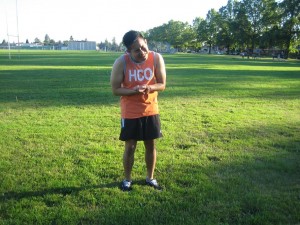Blisters from rowing usually develop from friction due to rubbing of hands against the handles of the oars. The epidermis is torn away from friction and serum will accumulate to form a blister.
A blister is a small-sized pocket of lymph fluid that develops on the upper skin layers due to strong rubbing or friction, burning, exposure to chemicals, freezing or even an infection. Most blisters contain clear fluid either plasma or serum, but they can be filled with pus if they become infected.

Treatment
- Avoid draining a blister if suffering from chronic condition such as diabetes, HIV, heart disease or cancer to prevent the risk of infections.
- Utilize a moleskin pad with the shape of a doughnut to lessen friction to the surface of the blister and for fast healing of the condition. Change padding every day and keep the affected area clean.
- Wear a loose bandage that can completely cover the blister. Use an adhesive bandage to lessen the friction. Use clean gauze and medical tape to cover large blisters. Another alternative is using a blister plaster which are made of plaster. It functions as a second layer of skin and provides protection of the affected area when the skin is wet.
- If there is a need to drain the blisters, the hands should be properly cleaned before touching the blisters to prevent the risk of infecting them. Wet hands with running water and lather soap. Scrub both hands for at least 20 seconds. Scrub areas between the fingers and fingernails and the front and back of both hands. Rinse the hands properly under clean running water. Dry the hands using paper towels.
- Disinfect the surface of the blister using cotton dipped in iodine solution. Swab the blister and areas around it until it is completely covered. Allow it to air dry.
- Sterilize a sharp needle by pouring rubbing alcohol on clean cotton and wipe it on the needle and let it dry. Carefully puncture the blister near its edge. Avoid stabbing the muscles or the deep skin layers under the blisters. Large blisters require several punctures. Drain all the fluid out of the blister. Keep the overlying skin from the blister in place and avoid removing it to prevent the risk of infection. Cover the drained blister with a thin layer of ointment to keep skin in its normal state. Cover the blisters using sterile or non-stick gauze and secure with a tape.
